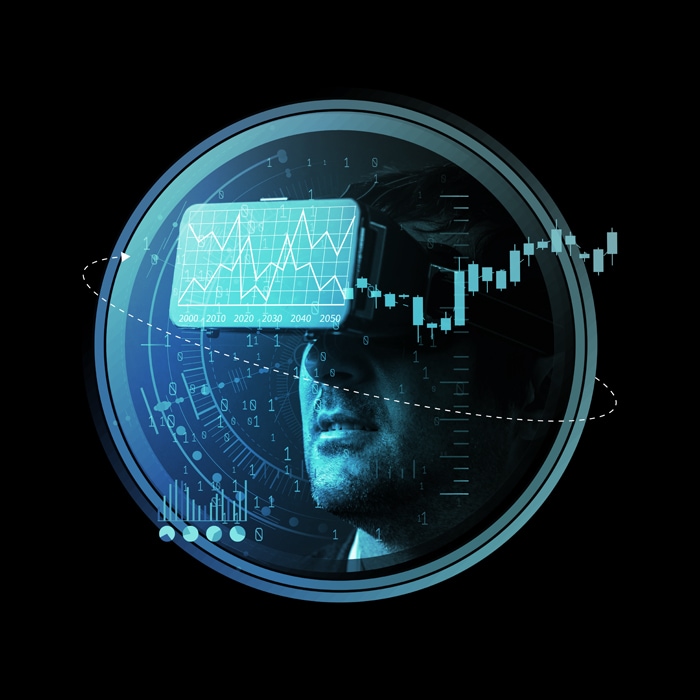Unleashing talent with the future of artificial intelligence has been saved

Perspectives
Unleashing talent with the future of artificial intelligence
Your people with augmented power
We are now in the Age of With™, where companies are harnessing the power of "with" to identify unique advantages through analytics and the future of artificial intelligence (AI). The results are insights that become automated, engagements that become insightful, and relevant information that can get into the right hands at the right moment. How can we ensure that both human and machine coexist and thrive?
The future of work
Executives who are early adopters of AI and cognitive analytics technologies continue to be enthusiastic supporters. According to Deloitte’s second edition of the State of AI in the Enterprise, these trailblazers are reporting substantial returns on initial AI projects and planning more projects for the future.1
AI and its ability to augment human workers is one of the most influential forces shaping the future of work. AI is nearing ubiquity in today’s economy, appearing in both the micro economies—the share of jobs requiring AI increased by 450 percent from 2013 to 20182—and macro economies—industry experts predict that AI deployment will add $15.7 trillion to the global GDP by 2030.3 Humans with machines, data with actions, companies with their customers. The future of artificial intelligence is now.
Lack of AI understanding
Access to talent is a major issue in this new age of humans with machines. The demand is especially intense for technical skills that don’t widely exist. Among the early adopters surveyed for the Deloitte's State of AI in the Enterprise study, lack of AI skills is a top-three concern for 31 percent.4
Clearly, organizations need to look at new ways of sourcing skills if they want to build future success on a foundation of analytics and AI technologies. Deloitte's 2019 Global Human Capital Trends report suggests several ways to tackle this, including finding "gig workers" in the alternative workforce and strategically leveraging technology, which can range from AI-driven chatbots to video interviews to targeted job advertising.5

Jobs of the future
A few examples of future jobs in the future of artificial intelligence:6
- Cognitive work (re) designer. Redesign knowledge-based jobs and their underlying business processes to take advantage of technologies such as deep and machine learning, natural language processing and generation, and robotic process automation.
- Renaissance worker. Combine technical expertise in one or more domains with expertise in design, project management, or client and customer interaction. Bring background in science, technology, engineering, art and mathematics (STEAM), not just science, technology, engineering and mathematics (STEM), fueled by art courses that add creativity and communication skills.
- Digital twin engineer. Whether it’s a jet engine or a shop floor, create a virtual representation of both the physical elements and the dynamics of how an IoT-connected product operates and interacts with its environment and use machine learning to optimize product performance.

AI enhances, does not take away
While the very concept of a job—where it is done and by whom—is being redefined by such forces as the gig economy, proximity, and technology, there are fundamentals that contribute to a positive and fulfilling employee experience that remain constant. These include having meaningful work, a flexible work life fit, and opportunities to learn and perform activities that have an impact.
AI in the workplace has the potential to make jobs much more interesting for human workers by augmenting their tasks and freeing them to perform higher-level functions and make better-informed decisions. Artificial intelligence can spark new ways of working that blend the best of what machines do with what humans bring to this collaboration: experience, judgment, and empathy. In fact, 78 percent of executives surveyed believe that AI-based augmentation of workers will fuel new ways of working.

In the Age of With, which human skills are irreplaceable?
This is a fundamental question that leaders in business and academia are grappling with, and we are only beginning to get a sense of what the enduring human skills are in this nascent phase of human and machine collaboration.
Imagine that you are responsible for operations at a large manufacturer and you want to maximize the life of equipment parts while avoiding unnecessary downtime. In the past, your maintenance team relied on "tribal knowledge" estimates or doing an ongoing, in-depth analysis of each piece of equipment. Today smart factories can use machine-to-machine and machine-to-human communication with cognitive technologies to make timely, accurate decisions. This predictive maintenance raises thought-provoking questions about the role of maintenance personnel versus the role of predictive algorithms, and what kind of traits a modern-day maintenance worker should possess.
Determining the immutable human skills needed in a workplace filled with AI solutions is hard, but necessary work. The need for human involvement is not going away, and the value of powerful, esoteric capabilities like imagination cannot be underestimated.
Five questions to unleash talent in the Age of With
- What are the skills and capabilities that are going to be paramount for the future success of my organization?
- How does the composition of my workforce relate to what I need? What is the gap between today and future needs?
- If I am advocating a business strategy that implies a certain level of skill, have I thought about the external and internal talent landscape required to support that?
- How am I planning to access those skills and capabilities? Have I opened the aperture to consider the gig economy and proximity dimension?
- How do I set up internal systems and platforms to enable continuous adaptation of skills?
Explore other chapters in the Age of With series
What idea links machines and people? The common answer is versus. But the true role of analytics and AI along with other tools is collaborative. The future of artificial intelligence is a future of human potential: people with machines, doing more than either could alone. Welcome to the Age of With™. Explore the other chapters in this series.

Recommendations
The Age of With™
Exploring the future of artificial intelligence


